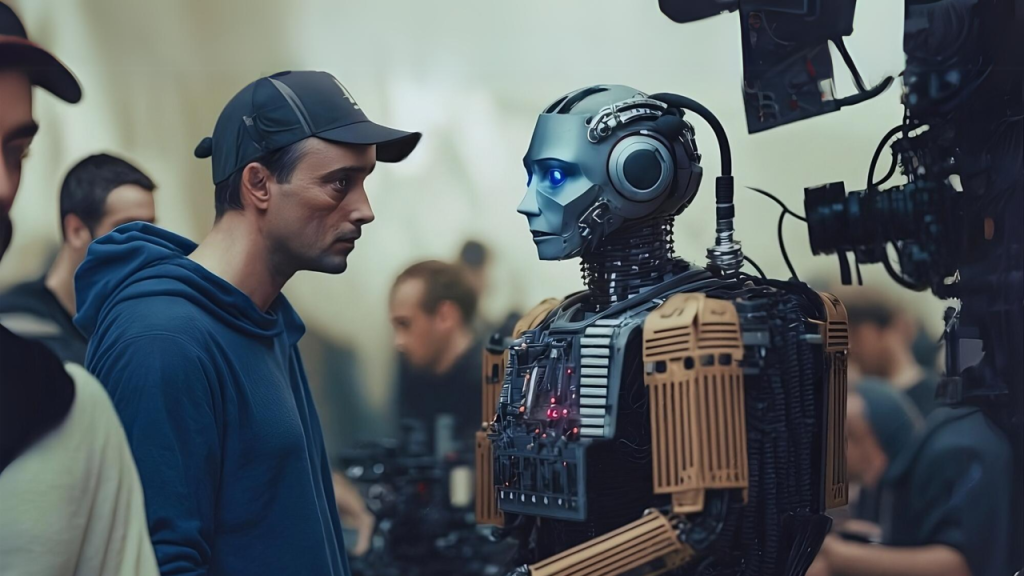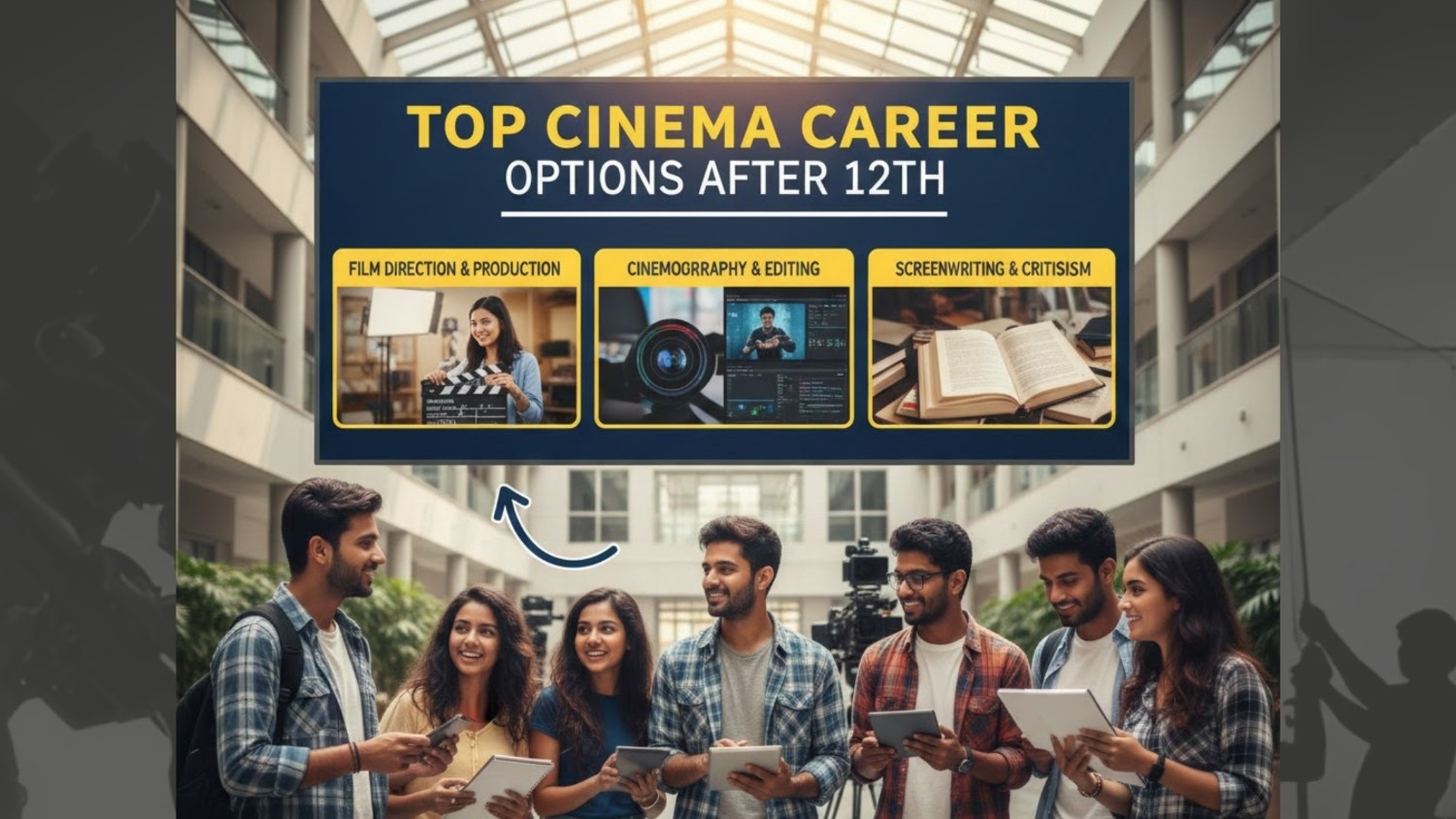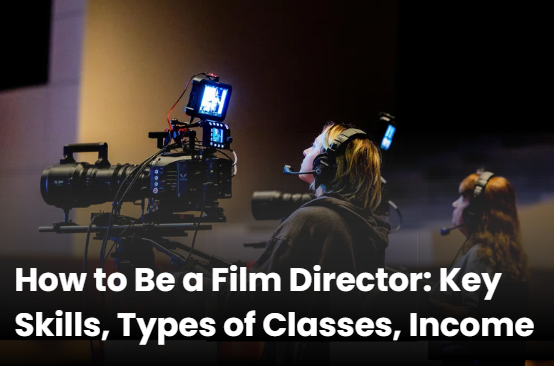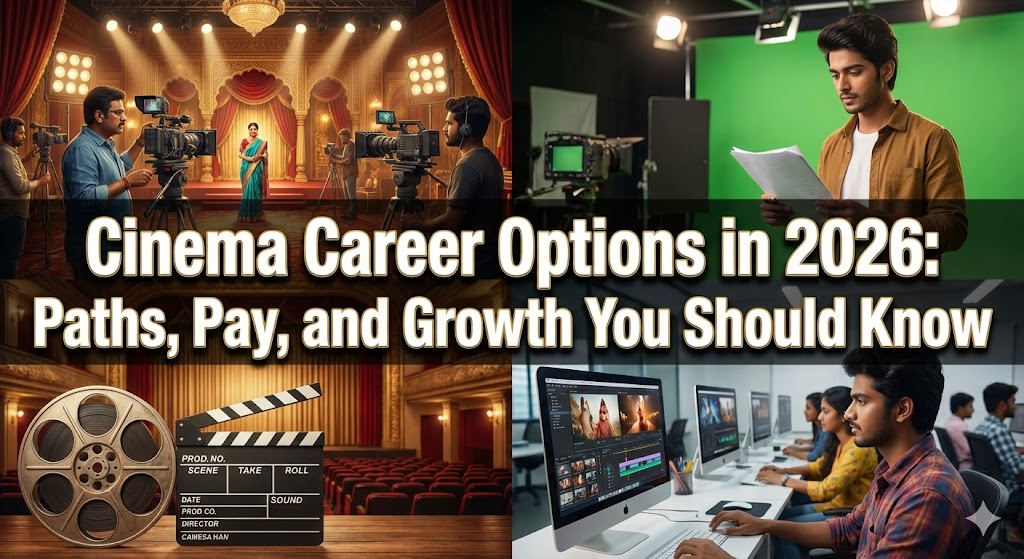How Technology is Shaping the Future of Film Direction
The future of film direction is tech-driven. Cinema today is a mirror world where art meets innovation. New-era film directors are at an intersection where creativity effortlessly blends with technology, crafting novel, immersive movies that leave the audience in awe.
The last few decades have witnessed a rapid change in how technology is used in filmmaking. Special effects and AR/VR tech have been game changers, providing audiences with a rich and memorable viewing experience. Modern filmmaking constantly blurs the lines between viewers and storytellers, and real and virtual – creating an innovative ‘in-between’ space that makes people feel drawn and seen.
From virtual productions, AI-powered storyboarding, and smart production technology to interactive filmmaking and big data insights for success at the box office – technology is transforming the face of cinema as we know it. It has introduced assistive equipment that makes the craft and the end product accessible to people – a dream come true for aspiring filmmakers.
Read the article to learn more about how advanced filmmaking technology shapes the future of film direction and dynamically changes viewing preferences and the industry.
How Does Technology Influence Filmmaking?
Do you want free career counseling?
Ignite Your Ambitions- Seize the Opportunity for a Free Career Counseling Session.
- 30+ Years in Education
- 250+ Faculties
- 30K+ Alumni Network
- 10th in World Ranking
- 1000+ Celebrity
- 120+ Countries Students Enrolled
The groundbreaking trends in tech-driven filmmaking aim to revolutionize the field and democratize the art form by increasing the accessibility and efficiency factors –
Engagement and Efficiency
While innovations like special effects add depth and drama beyond the good old green screen, immersive storytelling using augmented and virtual reality technology keeps the audience engaged. The gamification of cinema has shifted the role of the audience from being a passive viewer to an active participant in the storytelling process – enhancing the collective movie-viewing experience.
High-quality equipment and state-of-the-art studios with automation-enabled devices have made production and post-production processes more efficient as well.
Book Now →
Read Also: The 5 C’s of Cinematography: Secrets to Visual Storytelling
Reduced Production Cost and Waste Generation
With cameras that capture high-quality images, digital tools that save time in editing and sound design, and cloud editing and storage facilities, tech-driven approaches have made production costs manageable. Similarly, computer graphics and special effects to replace expensive props and elaborate sequences have significantly reduced waste generation.
Accessibility
We are moving toward a more accessible world. With tools like assistive editing software, adaptive camera equipment, voice-activated controls, remote editing, and real-time captioning and ASL integration, the future of film direction is diverse and collaborative.
Do you want free career counseling?
Ignite Your Ambitions- Seize the Opportunity for a Free Career Counseling Session.Technological innovation is making a career in cinema a reality for people from different walks of life, irrespective of their language, background, and physical abilities.
Technologies Shaping the Future of Film Direction
We have come a long way – from black-and-white, silent movies to today’s virtually produced, three-dimensional, and highly immersive films.
Audiences aren’t just passive viewers anymore, their preferences drive the kind of movies made, and they actively participate and interact to make cinema a personalized experience.
Read Also: Mastering Post-Production: Tips and Techniques for Beginners
Technology has brought efficient changes in direction, editing, and post-production too, with AI-driven tools that can share the workload, streamline mundane tasks, and leave more room for creative exploration –
1. Virtual Production Combining The Live And The Digital
In virtual productions, directors bring together live-action sequences and digital images. Consider it a more advanced version of using a green screen, where LED screens display actual images.
In virtual production setups, LED screens are fixed on walls and sometimes even ceilings. Game engines integrated into these screens make images adapt to all the changes made during filming including changes in scenes, camera angles, and perspectives. The advanced technology used in these software helps depict realistic light, shadows, and reflection – adding a life-like effect to the backgrounds.
The screens are designed to receive real-time data about camera movements, tracking, and angles, helping actors to interact with them and create a more authentic shooting environment while also making the process cost and time-efficient.
2. AI-Driven Storyboarding And Smart Previews
Storyboarding is an integral step in filmmaking. It helps visualize the scenes, plan shots and sequences, decide camera angles, and communicate with the entire team. AI-backed tools can create real-life images providing a clearer vision.
Generative AI acts on prompts, creates sketches and animations, and plans layout options – streamlining the pre-production. It helps reduce the time between concept development, planning, and execution.
Read Also: How Technology is Transforming Journalism & Media Industry
3. AR and VR Tech For Immersive Experiences
AR and VR technology is shaping the future of filmmaking by taking storytelling to the next level and fostering audience engagement.
AR/VR allows filmmakers to visualize scenes and camera angles in real-time, making pre-production more efficient and reducing the time and cost of retakes and rebuilding sets and props.
It is also tremendously effective in creating an immersive experience for viewers. With AR/VR integrated movies, audiences can be a part of the story in contrast to the role of a passive spectator in traditional film-watching.
A hot topic of this decade, this emerging filmmaking technology has created waves across the global industry, blurring the boundaries between on-screen plots and real-life experiences, enriching the meaning and impact of films.
4. Cloud Based Editing
Cloud-based editing tools allow filmmakers, editors, sound designers, and other professionals to remotely collaborate on a project without spending a lot of time compressing and transferring files. The integrated AI-driven editing and post-production tools make the processes hassle-free and ensure the footage remains high-quality.
Professionals can now work on different sections of a movie at the same time, store multiple versions of the same content, revisit and restore older versions, and experiment with different editing and sound design techniques to bring out the best results.
Cloud technology offers a centralized storage space that is easy to access and eliminates the need for physical storage, reducing overall production costs.
5. Interactive Filmmaking For Personalized Stories
Movies today have moved beyond the traditional formats; audiences can now actively participate in the storytelling process. With branching, viewers can interact with the story’s plot points and change the course of events – making decisions for the characters and enriching the concept of “watching a movie”.
Read Also: Acting for Film, TV, and Web Series: The Degree That Opens All Doors
The gamification of cinema and the viewer-centric approach have crafted a more personalized experience that makes film-watching memorable and adds an innovative touch to the storyline.
Challenges And Ethical Considerations
Despite the convenience and the promise of a high-tech, easily accessible future of film direction, technological intervention in cinema comes with challenges and moral concerns.
AI-powered tools can produce results that are biased against a race, religion, gender, ethnicity, disability, or body type due to a lack of diversity in the training data. Excessive reliance on these tools can perpetuate biases and hinder the nuances of creative storytelling.
Although super helpful in aiding the creative process and efficiently taking over mundane tasks, AI-based tools are known for the huge amount of energy they use. The long-term effect of this on the environment is a point of concern, which should be taken into consideration while integrating AI models into creative processes.
Too much dependence on special effects, AR/VR tech, and generative AI can lead to redundant storytelling, especially when the effects aren’t seamlessly integrated into the plot. It can take away the humane and creative aspect that makes films so relatable.
Accessibility has been one of the most remarkable aspects of smart tech. While real-time captions and interpretations are useful to make the content available for people around the world, insufficiently diverse data can result in misinterpretation of cultural and linguistic nuances.
Read Also: From Script to Screen: The Role of a Director in Filmmaking
The key to overcoming the ethical, creative, and logistic challenges is to let the technology be your assistant. Let it share the burden of all the repetitive and tedious work and optimize the time to explore your craft, and voila! You’ll be ready to direct an engaging and tech-efficient movie with a gripping storyline.
Conclusion
The future of film direction is advanced and immersive technology. With stunning special effects in movies like Avatar, 3D movies, and more recently augmented and virtual reality, modern cinema is constantly pushing the boundaries and reinventing itself.
Technologies like virtual production, cloud storage and editing, integration of AI and AR/VR, and interactive films have made cinema more accessible and engaging. It has transformed the techniques in film direction and shifted the role of the audience from passive viewers to active participants.
While there are technical constraints and moral concerns raised by experts about excessive reliance on technology in film direction and production, it remains the constant and most influential factor in the industry today.
If you are an aspiring filmmaker who also loves cool emerging technology, get yourself enrolled in a filmmaking course to kickstart your dream career and learn all about movies and direction. Check out AAFT’s School of Cinema for relevant, industry-standard courses for access to the essential tools and resources and a smooth transition into the professional space.
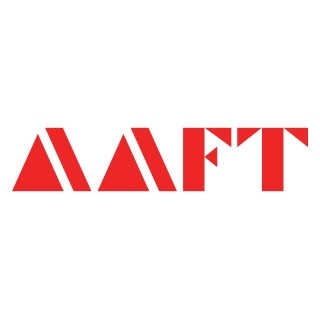
AAFT has been providing the world with limitless creativity and expression since 1993! Through a dynamic and industry-driven curriculum, AAFT provides engaging and captivating articles to persuasive blogs and empowers its readers to explore diverse avenues of creative media education-related content.


